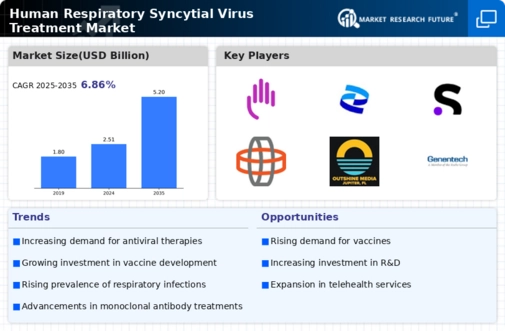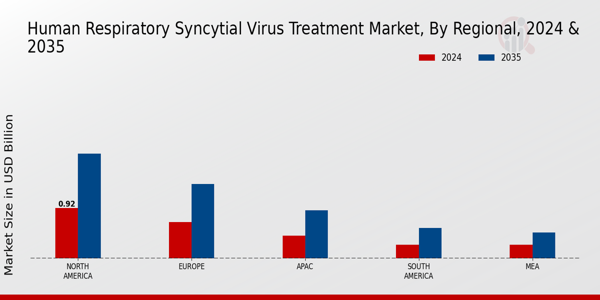The Global Human Respiratory Syncytial Virus Treatment Market has garnered significant attention due to the increasing prevalence of respiratory syncytial virus infections, especially among infants, elderly individuals, and immunocompromised patients.
As the awareness surrounding RSV and its consequences continues to rise, numerous pharmaceutical companies are striving to innovate and expand their product offerings within this niche segment. Competitive insights reveal a landscape characterized by strategic partnerships, mergers and acquisitions, and the development of advanced therapeutics aimed at reducing the burden of RSV.
Companies are focusing on both preventive measures, such as vaccines, and therapeutic interventions to improve patient outcomes. The market dynamics are influenced by regulatory approvals, extensive research and development efforts, and the evolving epidemiological data regarding RSV infections.
These elements collectively contribute to a rapidly advancing environment that fosters competitiveness among key players. Bristol-Myers Squibb holds a significant position in the Global Human Respiratory Syncytial Virus Treatment Market due to its robust pipeline and expertise in developing innovative treatments.
The company's commitment to research and development has led to a strong focus on respiratory diseases, with a particular emphasis on RSV. This strategic alignment allows BristolMyers Squibb to leverage its experience in immunology and oncology to create comprehensive therapeutic solutions for RSV infections.
The company's established reputation, coupled with its strong financial backing, enables substantial investments in clinical trials and collaborations to enhance treatment modalities. BristolMyers Squibb's ongoing research efforts and meaningful product pipelines underline its strength in the market, positioning the firm competitively against emerging and established players in the industry.
Pfizer stands out as a formidable competitor in the Global Human Respiratory Syncytial Virus Treatment Market, known for its extensive portfolio and emphasis on innovative therapeutic approaches for RSV. The company's strong commitment to addressing unmet medical needs has driven its efforts in the development of RSV vaccines and treatments.
Pfizer's experience in the infectious disease space, along with its advanced research capabilities, positions it favorably to respond to the challenges presented by RSV. The firm has been proactive in forging partnerships and collaborations to expedite the research process, showcasing its determination to lead in this market.
Pfizer's dedication to improving patient outcomes through the development of effective RSV treatments and its active engagement in clinical trials reflect the company's strength and versatility in navigating the complexities associated with the respiratory syncytial virus landscape.






















